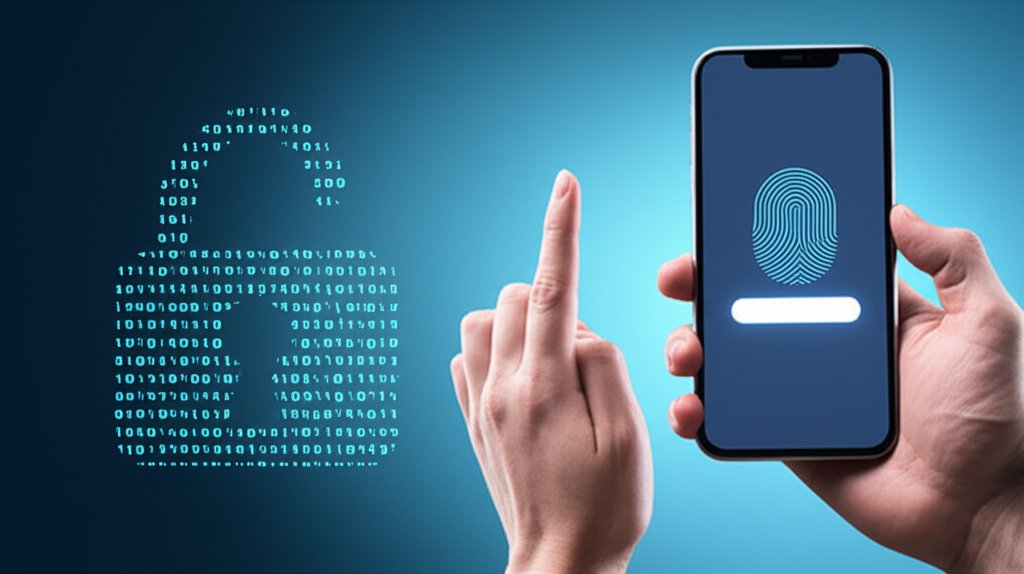In our increasingly connected world, apps have become indispensable. We rely on them for everything from managing our finances and communicating with loved ones to tracking our health and running our businesses. But as convenient as they are, there’s a serious underlying concern many of us don’t think about enough: app data leaks.
Why, in this age of advanced technology, do so many apps still expose our most sensitive information? It’s a question that keeps security professionals like me up at night, and it’s one we all need to understand to protect ourselves and our digital lives. Think of the popular fitness app that inadvertently exposed millions of user location histories for months, or the photo editing tool that left user photos and personal details vulnerable on an unsecured cloud server. These aren’t abstract failures; they’re real incidents with tangible consequences.
You’d think by now, with all the focus on cybersecurity, app developers would have this nailed down. Yet, countless news headlines tell a different story. These incidents are real threats that can lead to identity theft, financial ruin, and irreparable damage to your privacy or your small business’s reputation. It’s not just about guarding against malicious external attacks; it’s often about preventing accidental exposure from the apps themselves, often due to issues like misconfigured cloud storage, insecure APIs, or vulnerable third-party components.
This article isn’t meant to alarm you, but to empower you. We’ll unpack why these leaks happen, what data is at stake, and most importantly, what practical steps you and your small business can take to strengthen your digital security and protect what matters most. Understanding these risks is the first step toward reclaiming control over your online security.
Privacy Threats: Unmasking App Data Leaks
What Exactly is an App Data Leak? (And How is it Different from a Data Breach?)
An app data leak occurs when sensitive information is unintentionally exposed or made accessible to unauthorized parties. This often happens due to oversights in app design, development, or configuration. Think of it like leaving your diary open on a park bench by mistake. It’s not necessarily that someone deliberately broke into your house to steal it, but the information is out there for anyone to see.
This is different from a data breach, which typically involves malicious actors actively exploiting vulnerabilities to gain unauthorized access to data. A data leak can certainly lead to a data breach, providing the initial opening for cybercriminals. But the leak itself is usually a passive exposure, a blind spot that we, as users and businesses, need to be aware of and proactively work to close.
The Alarming Reality: What Sensitive Data is Truly at Risk?
When an app leaks data, it’s rarely trivial information. We’re talking about the details that form the very core of our digital identities and business operations. Here’s a breakdown of what’s commonly at stake:
- Personal Information (PII): This includes your name, address, phone number, email address, date of birth, location data, browsing habits, and even your contacts list. Leaks of this data can fuel identity theft and targeted phishing campaigns.
- Financial Details: Our credit card numbers, banking details, payment histories, and other monetary data are incredibly attractive to criminals. A leak here can quickly translate to financial loss.
- Login Credentials: Usernames and passwords for other services are golden tickets for attackers. If an app leaks your login, it could compromise a chain of your accounts.
- Business-Specific Data: For small businesses, this category is critical. It covers marketing strategies, internal communications, proprietary customer lists, trade secrets, and even intellectual property. Such leaks can undermine your competitive edge and lead to significant operational disruption.
- Health Information: With the rise of health and fitness apps, sensitive medical records, biometric data, and personal health histories are increasingly at risk. This is highly protected data for good reason, and its exposure can have serious personal implications.
The Root Causes: Why Apps Are Still Leaking Your Data
It’s frustrating, isn’t it, to hear about another data leak? But understanding the common reasons behind these incidents helps us anticipate and mitigate the risks. It’s often a combination of technical oversight and human error:
- Misconfigured Cloud Storage & Servers: Many apps rely on cloud services to store user data. If these cloud storage buckets or servers aren’t configured with the correct security settings, data can be unintentionally left publicly accessible, making it essential to understand and prevent cloud storage misconfigurations. It’s like leaving your front door wide open when you’ve moved all your valuables into a storage unit.
- Weak or Outdated Encryption: Encryption scrambles data to make it unreadable without the right key. If an app uses weak, easily crackable encryption methods, or fails to encrypt data at all (both “in transit” and “at rest”), any intercepted or accessed data becomes plain text for attackers.
- Insecure APIs and Third-Party Integrations: Apps don’t live in isolation. They connect to other services using Application Programming Interfaces (APIs) or integrate with third-party Software Development Kits (SDKs) for things like analytics, ads, or social media sharing. If these interfaces aren’t securely built or vetted, they can become gaping holes for data leaks. Developing a strong API security strategy is therefore paramount for your business.
- Excessive App Permissions: How often do you blindly tap “Allow” when an app asks for permission? Apps frequently request access to your camera, microphone, contacts, location, or photos, even when it’s not strictly necessary for their core function. This creates an unnecessary attack surface, potentially exposing more data than you intend to share.
- Human Error & Negligence: Developers are human, and mistakes happen. Simple coding errors, misconfigurations during deployment, or lax internal data handling practices can inadvertently expose sensitive information. A single slip-up can have widespread consequences.
- Outdated Software & Lack of Patches: Running old versions of an app or your device’s operating system (iOS or Android) is a significant risk. These older versions often contain known security vulnerabilities that cybercriminals are actively exploiting. Updates usually include critical security patches designed to fix these weaknesses.
- Insecure Data Storage on Devices: Sometimes, sensitive app data is stored directly on your phone or tablet without adequate encryption. If your device is lost, stolen, or compromised by malware, that locally stored data can be easily accessed.
- Insecure Data Transmission: When an app communicates with its servers, the data should be encrypted during transit (think HTTPS for websites). If data is sent over unencrypted channels, it’s like having a conversation in a public park with everyone listening in.
The Real-World Impact: Why These Leaks Matter to You & Your Business
The consequences of a data leak are far from abstract. They can significantly impact your personal life and the viability of your small business.
For Individuals:
- Identity Theft & Fraud: Leaked personal information is gold for identity thieves. They can open fraudulent accounts, make unauthorized purchases, or even file false tax returns in your name.
- Financial Loss: This can range from direct theft of funds to credit score damage that impacts future loans and investments.
- Privacy Invasion: Beyond financial harm, leaked data can expose your most private habits, location history, or communications, leading to targeted harassment, unwanted marketing, or even blackmail.
For Small Businesses:
- Reputational Damage & Loss of Customer Trust: A data leak can shatter customer confidence overnight. Rebuilding that trust is incredibly difficult, often leading to a significant loss of business.
- Financial Penalties & Legal Liabilities: Regulations like GDPR (Europe) and CCPA (California) carry hefty fines for data mishandling. Depending on the data type, HIPAA violations can also lead to severe penalties. Legal action from affected customers is also a real possibility.
- Operational Disruption & Competitive Disadvantage: Leaks of proprietary data like marketing plans or customer lists can severely impact your operations and give competitors a significant edge, potentially costing your business millions.
Foundational Defenses: Password Management
The first and most critical line of defense against data leaks, especially those facilitated by compromised credentials, is strong password management. It’s simple, but we often overlook its importance.
You absolutely must use strong, unique passwords for every single app and online service you use. I know what you’re thinking: “How can I possibly remember all those?” That’s where a reputable password manager comes in. Tools like LastPass, 1Password, or Bitwarden securely store all your complex passwords behind a single master password, generate new strong ones for you, and even fill them in automatically. It’s a game-changer for digital hygiene, and it’s something every individual and small business should adopt immediately. Never reuse passwords; if one service gets compromised, attackers won’t be able to access your other accounts.
Elevating Security: Two-Factor Authentication (2FA)
Even with the best password manager, passwords can still be compromised. That’s why Two-Factor Authentication (2FA), also known as Multi-Factor Authentication (MFA), is non-negotiable. It adds an extra layer of verification, typically requiring something you know (your password) and something you have (like your phone or a physical key).
Wherever it’s offered, enable 2FA! This usually involves a code sent to your mobile phone via SMS, a code generated by an authenticator app (like Google Authenticator or Authy), or a physical security key (like a YubiKey). For device and app access, utilize biometric authentication such as fingerprint or facial recognition (Face ID) where available. It makes it significantly harder for an unauthorized person to access your accounts, even if they’ve somehow gotten hold of your password. We’ve seen countless times how 2FA thwarts attempted intrusions, so don’t skip this crucial step.
Securing Your Connection: VPN Selection
Data leaks don’t just happen when data is stored; they can also occur when data is in transit. This is especially true when you’re using public Wi-Fi networks in cafes, airports, or hotels. These networks are often unsecured, making your data vulnerable to interception by anyone else on the same network.
A Virtual Private Network (VPN) creates an encrypted tunnel for your internet traffic, essentially masking your online activity and making it much harder for others to snoop on your data. When selecting a VPN, look for providers with a strong no-logs policy, robust encryption standards (like AES-256), servers in locations relevant to you, and positive reviews regarding speed and reliability. For small businesses, a business-grade VPN can protect employees working remotely or traveling, ensuring sensitive data is always transmitted securely.
Private Conversations: Encrypted Communication
Beyond securing your general internet traffic, it’s vital to use communication apps that prioritize end-to-end encryption for your messages, calls, and files. This means that only the sender and intended recipient can read the messages, and no one in between—not even the app provider—can access the content.
While many popular messaging apps claim to offer encryption, some implement it better than others. For truly secure communication, consider using apps like Signal, which is widely recognized for its robust, open-source end-to-end encryption. For business communications, look for platforms that offer strong encryption for internal messaging and file sharing, ensuring your proprietary information remains confidential.
Fortifying Your Web Experience: Browser Privacy
Your web browser is often the gateway to many apps and services, making its security and privacy settings paramount. Default browser settings often favor convenience over privacy, allowing tracking cookies, pop-ups, and potentially exposing your browsing habits.
Take control by hardening your browser’s privacy settings. You can install privacy-focused browser extensions (like ad blockers and tracker blockers), use privacy-oriented browsers (such as Brave or Firefox Focus), and regularly clear your browsing data and cookies. Be mindful of which sites you grant permissions to (e.g., location, notifications). For small businesses, consider standardizing browser configurations across employee devices to ensure a baseline level of privacy and security.
Navigating Social Media Safely
Social media apps are notorious for collecting vast amounts of personal data, and their integrations with other apps can be a significant leak point. What you share, and how these platforms manage your data, directly impacts your privacy and security.
Regularly review the privacy settings on all your social media accounts. Understand what data these apps are collecting and sharing. Limit third-party app access to your social media profiles, and be very cautious about the information you post, especially location data or personal identifiers. For small businesses, establish clear social media policies for employees to prevent accidental leaks of business-sensitive information or personal data that could be exploited by social engineers.
Minimizing Your Digital Footprint: Data Minimization
The less data you share, the less data there is to leak. This principle, known as data minimization, is one of the most effective ways to protect yourself and your business.
Be incredibly smart about app permissions. Before installing any app, review what permissions it’s requesting. Does a flashlight app really need access to your contacts or microphone? Probably not. After installation, go into your device settings and revoke any unnecessary permissions. For businesses, performing due diligence on third-party vendors and apps is critical. Don’t implement an app or service without thoroughly understanding its data handling practices and security posture. For small businesses, tools like Mobile Device Management (MDM) solutions help manage security across multiple employee devices, enforce strong password policies, and enable remote wiping for lost devices, effectively minimizing the risk associated with business data on mobile devices. Data Loss Prevention (DLP) tools can also monitor and control sensitive data movement, preventing it from leaving your business network unintentionally.
Preparing for the Worst: Secure Backups
Even with the most robust preventative measures, data leaks and other security incidents can still occur. This is where having a comprehensive, secure backup strategy becomes your safety net. If an app or service you rely on experiences a leak or breach, or if your own device is compromised, secure backups can minimize disruption and data loss.
Regularly back up your important data, both personal and business-related. Ensure these backups are encrypted, whether they’re stored in the cloud or on external physical drives. For cloud backups, use strong, unique passwords and 2FA. For physical backups, store them in a secure location. For small businesses, this is non-negotiable. Implement automated, encrypted backup solutions for all critical business data, and test your recovery process periodically to ensure it works when you need it most. Losing data can be as damaging as having it leaked.
Thinking Like an Attacker: Threat Modeling Your Digital Life
To truly get ahead of app data leaks, you need to start thinking proactively, almost like a security architect. This is what we call “threat modeling” – identifying potential threats, vulnerabilities, and the risks they pose, then finding ways to mitigate them.
For individuals, this means regularly assessing your digital habits. Which apps hold your most sensitive data? What would happen if that data leaked? Are you relying too much on convenience over security? For small businesses, threat modeling involves a more formal approach. Identify all your critical data assets, understand where they reside (on devices, in apps, in the cloud), and analyze how they could be compromised. This includes educating employees on cybersecurity best practices, phishing awareness, and proper data handling. Investing in mobile security apps and, for businesses, Data Loss Prevention (DLP) tools can further enhance your ability to monitor and control sensitive data. By understanding potential weak points before they’re exploited, you can build a stronger, more resilient digital defense.
Taking Control: Your Role in a Safer Digital World
It’s clear that app data leaks are a persistent and serious challenge, stemming from a mix of technical complexities and human factors. While developers and platforms certainly bear a significant responsibility to build more secure applications, we, as users and small business owners, aren’t powerless. In fact, our proactive engagement is a critical part of the solution.
By understanding the risks and implementing the practical strategies we’ve discussed, you can dramatically reduce your exposure and protect your sensitive information. Don’t wait for a leak to happen. Be an informed, security-conscious digital citizen. It’s a continuous process, but it’s one that empowers you to control your own digital destiny.
Protect your digital life! Start with a password manager and 2FA today.




